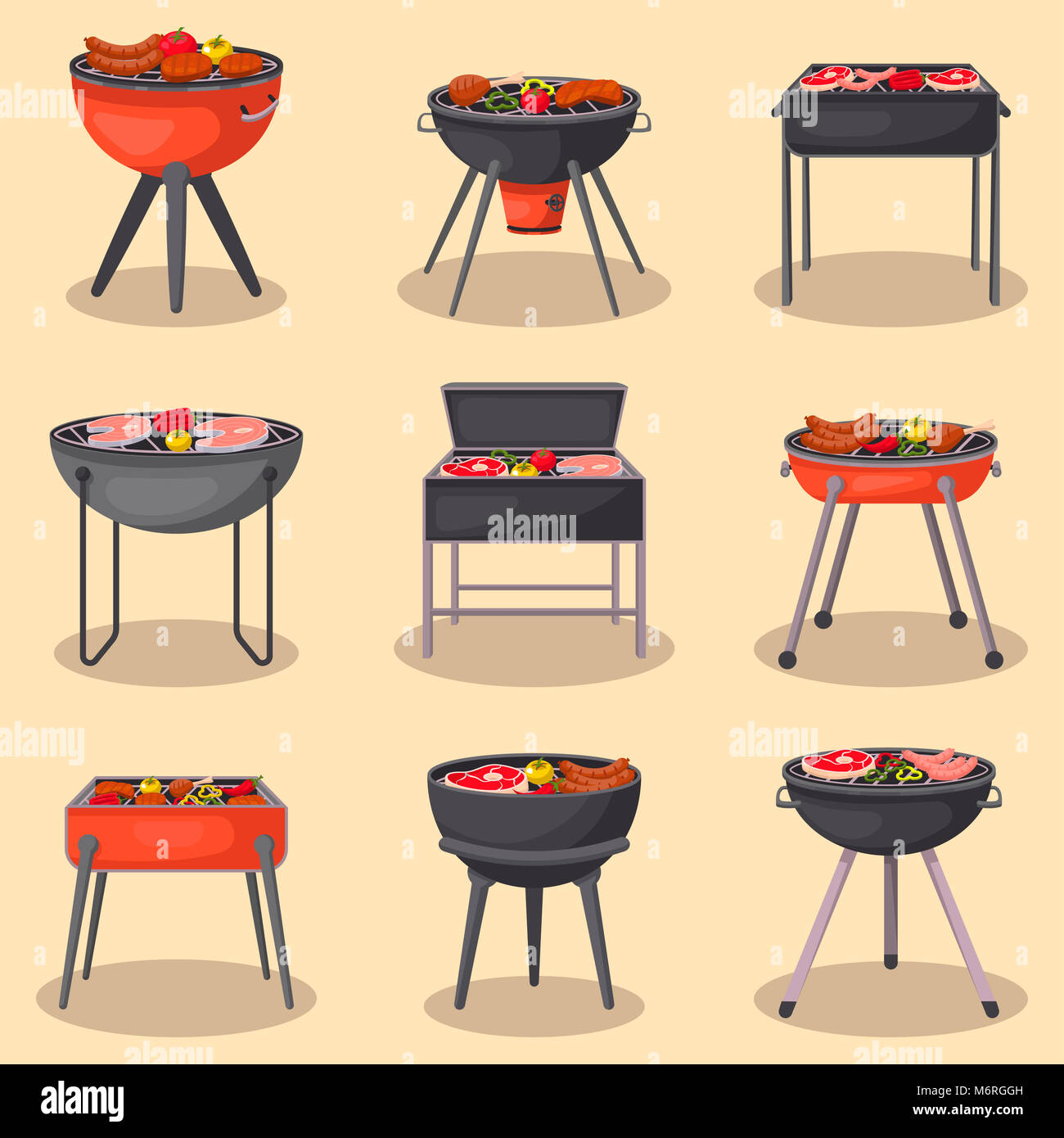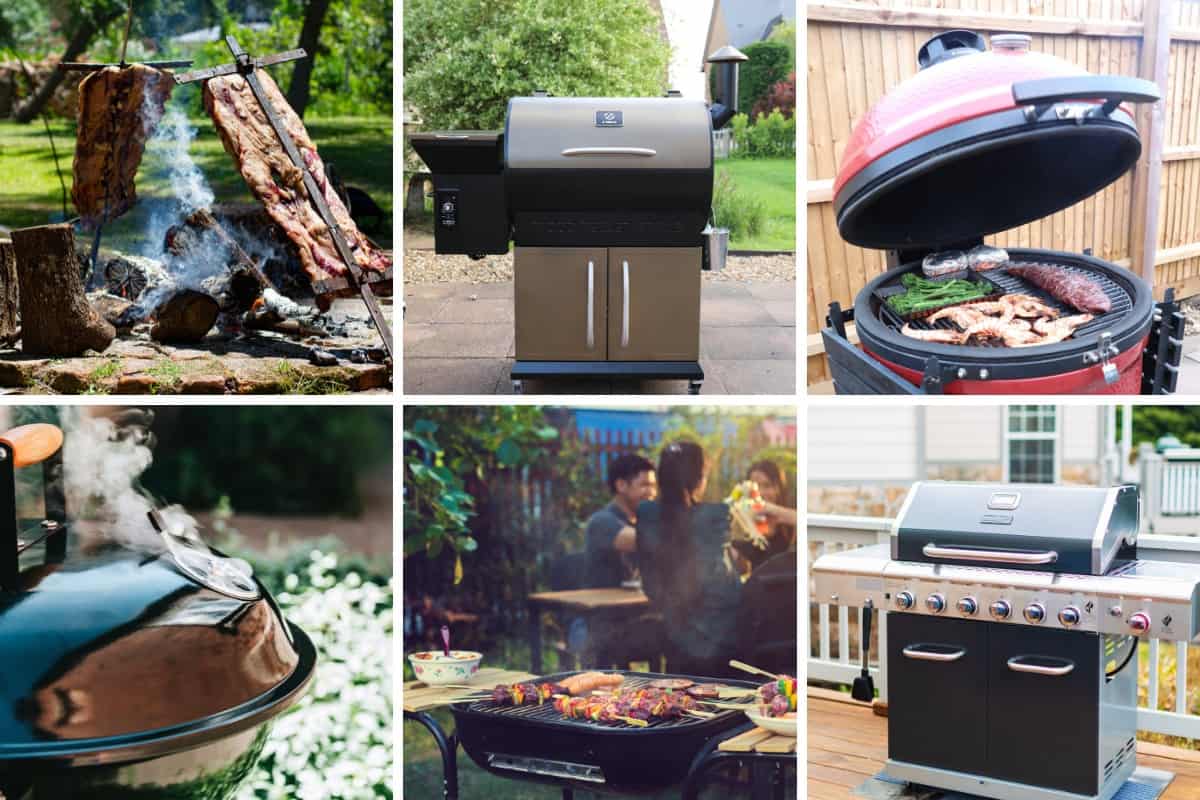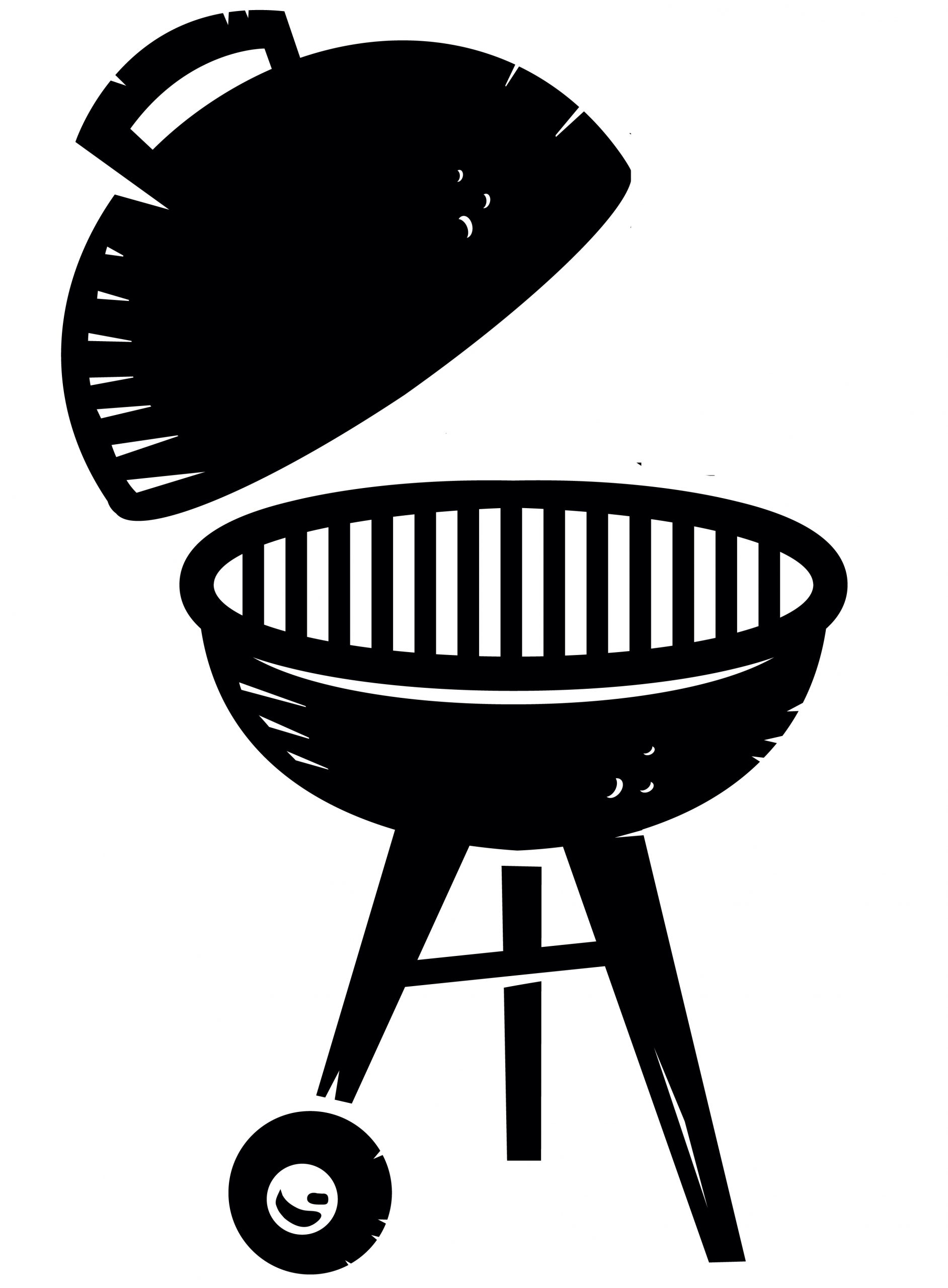Choosing the right grill for outdoor cooking can transform your culinary experience. This guide provides a comparison of various grill types, highlighting their pros and cons to help you make an informed decision.
Charcoal Grills: The Classic Choice
Charcoal grills are renowned for their ability to deliver rich, smoky flavors. Utilizing briquettes or lump charcoal, these grills are ideal for those seeking an authentic grilling experience.
Benefits of Charcoal Grills
- Unmatched Flavor: The smoky flavor achieved with charcoal grilling is hard to beat, adding depth and aroma to meats and vegetables alike.
- High Temperature: Charcoal grills can reach exceptionally high temperatures, perfect for searing.
- Portability: Many charcoal models are compact and easy to transport, suitable for outdoor adventures.
- Affordable: Generally more budget-friendly, charcoal grills cater to a broad range of budgets.
Drawbacks of Charcoal Grills
- Extended Preheat Time: Heating charcoal can take 20 to 40 minutes.
- Messy Cleanup: Charcoal ash and residue require more maintenance.
- Temperature Management: Precise temperature control can be challenging with charcoal.
Gas Grills: The Quick and Convenient Option
Gas grills, powered by propane or natural gas, are popular for their quick heating and user-friendly controls, making them ideal for anyone seeking ease and efficiency.
Benefits of Gas Grills
- Instant Ignition: With push-button ignition, gas grills are ready within minutes, eliminating the need to wait.
- Adjustable Heat: Gas grills feature knobs for precise temperature control, enabling versatile cooking options.
- Minimal Cleanup: Gas grills produce less smoke and ash, making them easier to clean.
- Extra Features: Many gas grills offer side burners, griddles, and rotisseries, adding versatility.
Drawbacks of Gas Grills
- Less Smoky Flavor: Gas grills lack the strong smoky flavor that charcoal provides.
- Higher Cost: Gas grills, especially natural gas models, are often more expensive.
- Fuel Limitations: Access to a gas line or propane is required, impacting portability for some models.
Electric Grills: Perfect for Indoor and Restricted Outdoor Spaces
Electric grills are a safe option for those living in areas with fire restrictions, relying on electricity to cook food without open flames.
Benefits of Electric Grills
- Simple Setup: Just plug in and start grilling, with quick heating and no fuel setup.
- Indoor-Friendly: Safe for indoor or outdoor use, perfect for year-round grilling.
- Space-Saving Design: Compact and portable, ideal for small spaces like balconies or kitchens.
Drawbacks of Electric Grills
- Limited Smoky Flavor: Electric grills don't replicate the smoky flavor of charcoal or gas.
- Lower Heat Range: They typically don’t reach the high temperatures needed for searing.
- Reliant on Electricity: Not suitable for areas without electrical access.

Pellet Grills: A Blend of Wood-Fired Flavor and Modern Technology
Using wood pellets and electronic controls, pellet grills bring the convenience of temperature control with a rich, wood-smoked flavor.
Benefits of Pellet Grills
- Wood-Fired Taste: Delivers a smoky, wood-fired flavor that is more consistent than charcoal.
- Temperature Accuracy: Digital controls allow for precise temperature settings.
- Multi-Function Cooking: Can operate as a grill, smoker, or oven, providing great versatility.
Drawbacks of Pellet Grills
- Higher Cost: Pellet grills tend to be pricier than charcoal and gas options.
- Electric Power Needed: Requires electricity for digital controls and pellet feed systems.
- Regular Maintenance: The pellet system requires periodic cleaning to prevent blockages.
Kamado Grills: The Ceramic Grill with Superior Heat Control
Kamado grills, made from ceramic, are known for their excellent heat retention and versatility, allowing users to grill, smoke, or bake.
Benefits of Kamado Grills
- Exceptional Heat Retention: Ceramic construction ensures even cooking and great heat retention.
- Fuel Efficiency: These grills consume less charcoal due to superior insulation.
- Highly Versatile: Able to cook at a wide range of temperatures for various cooking styles.
- Durable Design: Built from ceramic materials, Kamado grills are made to last.
Drawbacks of Kamado Grills
- High Cost: Kamado grills are typically more expensive than traditional charcoal grills.
- Heavy: Their ceramic construction makes them heavier and less portable.
- Learning Curve: Temperature control can be tricky and may require some practice.

Portable Grills: Compact Options for Grilling on the Go
Portable grills are designed for easy transportation, perfect for outdoor adventures like camping, tailgating, and picnics.
Benefits of Portable Grills
- Easy to Transport: Lightweight and compact, ideal for grilling anywhere.
- Variety of Fuel Types: Available in charcoal, gas, and electric models to suit different needs.
- Affordable: Often more budget-friendly than full-sized grills.
Drawbacks of Portable Grills
- Limited Cooking Space: Smaller size restricts the amount of food you can cook at once.
- Basic Heat Control: Generally lacks the precise temperature control of larger models.
Conclusion
Selecting the ideal grill depends on your personal preferences, cooking style, and available space. Each type offers unique advantages, from the smoky depth of a charcoal grill to the convenience of a gas grill or the portability of a compact model. By weighing the strengths and limitations of each grill type, you can find the perfect match to enhance your outdoor cooking experiences.
